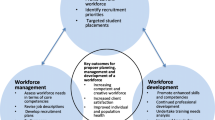Abstract
Properly functioning laboratory equipment is a critical component for strengthening health systems in developing countries. The laboratory can be an entry point to improve population health and care of individuals for targeted diseases – prevention, care, and treatment of TB, HIV/AIDS, and malaria, plus maternal and neonatal health – as well as those lacking specific attention and funding. We review the benefits and persistent challenges associated with sustaining laboratory equipment maintenance. We propose equipment management policies as well as a comprehensive equipment maintenance strategy that would involve equipment manufacturers and strengthen local capacity through pre-service training of biomedical engineers. Strong country leadership and commitment are needed to assure development and sustained implementation of policies and strategies for standardization of equipment, and regulation of its procurement, donation, disposal, and replacement.

Similar content being viewed by others
References and Note
WHO Health Organization/UNICEF/UNAIDS. (2010) Towards Universal Access: Scaling up priority HIV/AIDS interventions in the health sector. Progress Report 2010, http://whqlibdoc.who.int/publications/2010/9789241500395_eng.pdf, accessed 3 June 2011.
World Health Organization. (2010) Antiretroviral therapy for HIV infection in adults and adolescents. Recommendations for a public health approach, 2010 revision, http://whqlibdoc.who.int/publications/2010/9789241599764_eng.pdf, accessed 3 June 2011.
World Health Organization. (2006) The role of medical devices and equipment in contemporary health care systems and services. June 2006, http://gis.emro.who.int/HealthSystemObservatory/PDF/TechnicalandDiscussionPapers/The%20role%20of%20medical%20devices%20and%20equipment%20in.pdf, accessed 3 June 2011.
Petti, C.A., Polage, C.R., Quinn, T.C., Ronald, A.R. and Sande, M.A. (2006) Laboratory medicine in Africa: A barrier to effective health care. Clinical Infectious Diseases 42 (3): 377–382.
Nkengasong, J.N. (2010) A shifting paradigm in strengthening laboratory health systems for global health. American Journal of Clinical Pathology 134 (3): 359–360.
Clinton, W.J. (2003) Turning the tide on the AIDS pandemic. New England Journal of Medicine 348 (18): 1800–1802.
Gayle, H.D. (2003) Curbing the global AIDS epidemic. New England Journal of Medicine 348 (18): 1802–1805.
Stevens, W. et al (2008) Role of the laboratory in ensuring global access to ARV treatment for HIV-infected children: Consensus statement on the performance of laboratory assays for early infant diagnosis. Open AIDS Journal 2: 17–25.
Abimiku, A.G. (2009) Building laboratory infrastructure to support scale-up of HIV/AIDS treatment, care, and prevention: In-country experience. American Journal of Clinical Pathology 131 (6): 875–886.
United Nations. Summit on the millennium development goals, http://www.un.org/millenniumgoals/, accessed 10 December 2010.
Nkengasong, J.N. et al (2010) Laboratory systems and services are critical in global health: Time to end the neglect? American Journal of Clinical Pathology 134 (3): 368–373.
Halbwachs, H. (2000) Maintenance and the life expectancy of healthcare equipment in developing economies. Health Estate 54 (2): 26–31.
Pattanapanyasat, K., Sukapirom, K., Kowawisatsut, L. and Thepthai, C. (2008) New BD FACS Count CD4 reagent system for simultaneous enumeration of percent and absolute CD4 T-lymphocytes in HIV-1-infected pediatric patients. Cytometry Part B (Clinical Cytometry) 74 (1): S98–S106.
Abuja Summit to Endorse ADF 2000 Consensus on Fighting HIV/AIDS. Abuja declaration on HIV/AIDS, tuberculosis and other related infectious diseases, http://www.uneca.org/adf2000/abuja%20declaration.htm, accessed 10 December 2010.
World Health Organization. The Maputo declaration on strengthening of laboratory systems, http://www.who.int/hiv/amds/amds_maputo_dec_lab_sys.pdf, accessed 12 July 2010.
World Health Organization. Guidelines for health care equipment donations. Evidence and information for policy (EIP). Organization of health services delivery (OSD), http://www.who.int/medical_devices/publications/en/Donation_Guidelines.pdf, accessed 10 December 2010.
All Africa.com. Ethiopia: Firm signs 25 million Br HIV equipment support deal, http://allafrica.com/stories/201007130385.html, accessed 14 October 2010.
Zeh, C.E. et al (2010) Field experience in implementing ISO 15189 in Kisumu, Kenya. American Journal of Clinical Pathology 134 (3): 410–418.
Gershy-Damet, G.M. et al (2010) The World Health Organization African region laboratory accreditation process: Improving the quality of laboratory systems in the African region. American Journal of Clinical Pathology 134 (3): 393–400.
Yao, K. et al (2010) Improving quality management systems of laboratories in developing countries. American Journal of Clinical Pathology 134 (3): 401–409.
The United States President's Emergency Plan for AIDS Relief: New public-private partnership to strengthen laboratory systems (updated January 2009), http://www.pepfar.gov/press/94448.htm, accessed 24 November 2010.
Centers for Disease Control and Prevention. Public-private partnership strengthens global laboratory systems, http://www.cdc.gov/globalaids/Success-Stories/BD-Public-Private-Partnership.html, accessed 10 December 2010.
Garcia, P.M. et al (1999) Maternal levels of plasma human immunodeficiency virus type 1 RNA and the risk of perinatal transmission. Women and Infants Transmission Study Group. New England Journal of Medicine 341 (6): 394–402.
Cooper, E.R. et al (2002) Combination antiretroviral strategies for the treatment of pregnant HIV-1-infected women and prevention of perinatal HIV-1 transmission. Journal of Acquired Immune Deficiency Syndrome 29 (5): 484–494.
Quinn, T.C. et al (2000) Viral load and heterosexual transmission of human immunodeficiency virus type 1. Rakai Project Study Group. New England Journal of Medicine 342 (13): 921–929.
Attia, S., Egger, M., Müller, M., Zwahlen, M. and Low, N. (2009) Sexual transmission of HIV according to viral load and antiretroviral therapy: Systematic review and meta-analysis. AIDS 23 (11): 1397–1404.
Das, M. et al (2010) Decreases in community viral load are accompanied by reductions in new HIV infections in San Francisco. PLoS One 5 (6): e11068.
Author information
Authors and Affiliations
Corresponding author
Additional information
The authors examine approaches to assure that laboratory equipment is properly functioning: equipment management policies and a comprehensive equipment maintenance strategy.
Rights and permissions
About this article
Cite this article
Fonjungo, P., Kebede, Y., Messele, T. et al. Laboratory equipment maintenance: A critical bottleneck for strengthening health systems in sub-Saharan Africa?. J Public Health Pol 33, 34–45 (2012). https://doi.org/10.1057/jphp.2011.57
Published:
Issue Date:
DOI: https://doi.org/10.1057/jphp.2011.57




